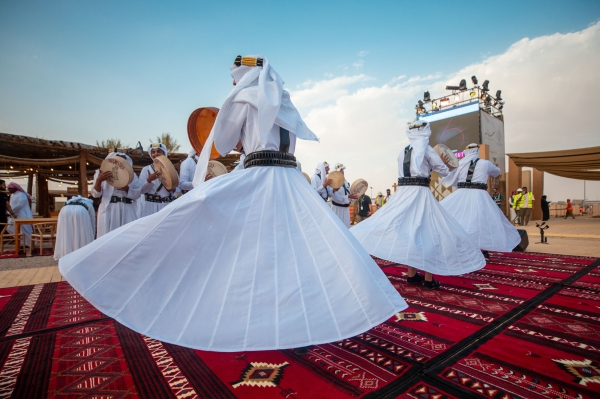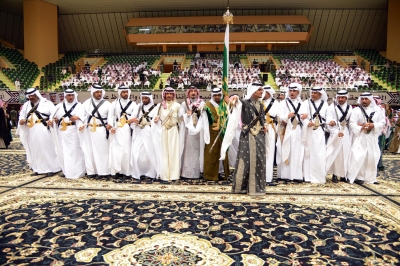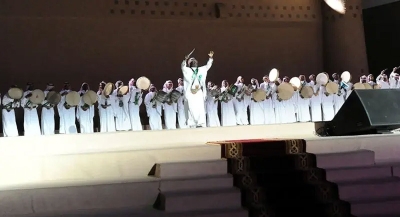

Al-Qusaimi Dance is a traditional dance accompanied by singing, known in the cities of Makkah al-Mukarramah, al-Madinah al-Munawwarah, and Taif. It is one of the diverse traditional arts in the Kingdom of Saudi Arabia, performed at weddings and celebrations as an expression of joy and happiness. The dance represents an artistic heritage that residents are keen to preserve and pass down through generations.
Definition of al-Qusaimi Dance
Al-Qusaimi Dance is one of the traditional arts known in Taif. This art form originated in Taif Governorate and its surrounding villages. The rhythm of al-Qusaimi Dance is an old Hejazi rhythm known as 'Khafif al-Thaql al-Thani'. It gained this name due to its resemblance to the San’ani rhythm, as singers and artists in the Hejaz historically blended Hejazi and San’ani music, especially in the Danat and their intricate forms. The rhythm of al-Qusaimi Dance resembles the Zir rhythm, according to early accounts. It is a sophisticated singing style that has been used in the Arabian Peninsula since the Umayyad era, as documented in artistic books and references. The early artists of the Hejaz excelled in performing this dance to the tunes and rhythms of the Danat.
Sections of al-Qusaimi Dance
Al-Qusaimi Dance is divided into three sections. The first section pertains to the Bedouin community, which marks the origin of this art. It is performed with the synchronized clapping of the performers in response to the poet’s verses, resembling the Murad art form in the Hejaz and the Qalta art in the Arabian Gulf. The second section is common in the villages of Taif and is performed in the same manner as the first section but with the use of two or three tambourines. It is distinguished from the first section by its faster performance and harmonious rhythmic precision. The third section is specific to the residents of Taif City itself. Performers execute it to the tunes of more than six tambourines, making it a developed form of the first and second sections. It resembles the Majroor art in terms of rhythm and certain collective performance methods.
Relationship between al-Qusaimi and al-Majroor
There is a strong connection between al-Qusaimi and al-Majroor art forms. Al-Majroor emerged in 1863, branching out from al-Qusaimi and originally known as 'al-Nass al-Raiq' (The Pure Text). It is performed in the style of Haz’a, a technique involving Kasra and Raj’a, and additional melodies were later incorporated. A musical scale was also introduced to harmonize with its established tunes, and the performers’ movements became more varied.
Al-Qusaimi aligns with al-Majroor as it serves as the origin of what is known as 'Kasra.' Performers of al-Majroor are typically capable of performing al-Qusaimi, as al-Majroor encompasses three art forms: al-Qusaimi, al-Hadari, and al-Majalsi, which are performed while seated and resting. When standing, al-Majroor is performed with tambourines.
Al-Qusaimi Dance is at risk of disappearing
Al-Qusaimi Dance is one of the folkloric traditions at risk of disappearing due to the scarcity of those who master it correctly. This has led some folk groups to present it alongside the Majalisi style.
Related quizzes
Related articles

